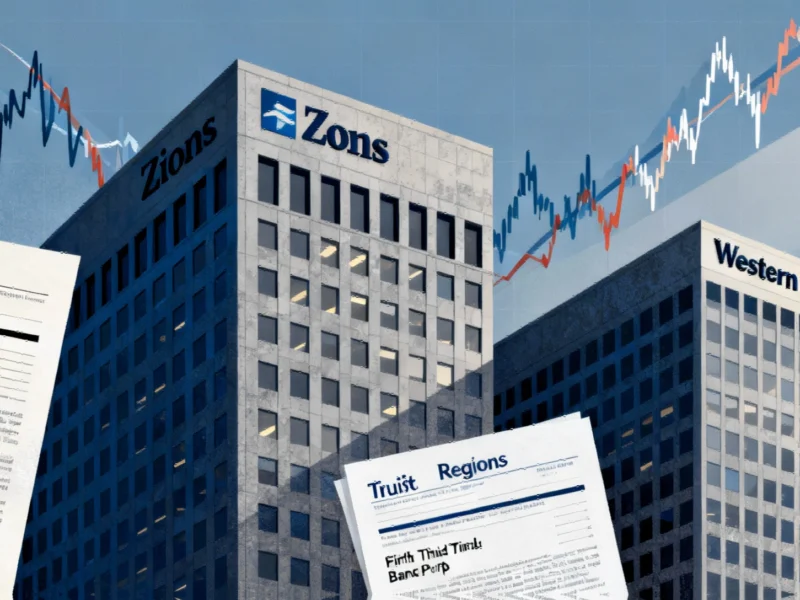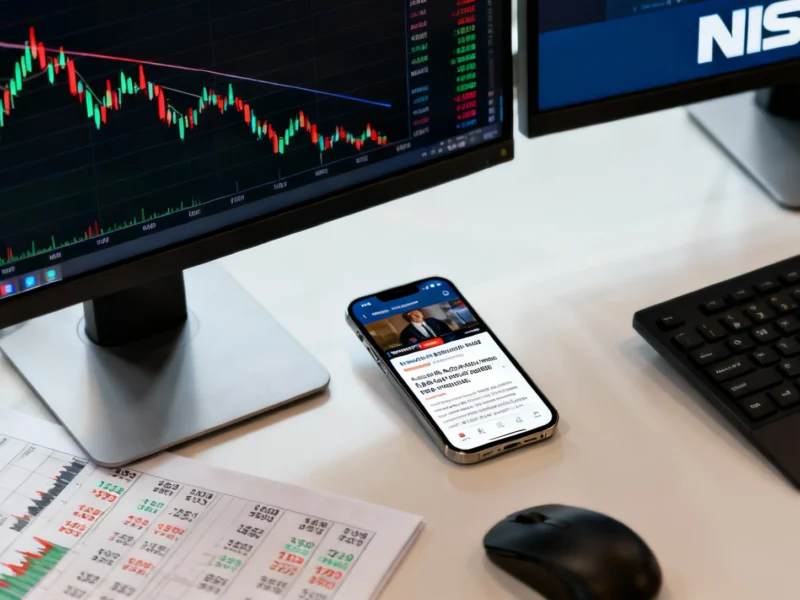The Banking Sector’s Warning Signal
Last week’s sudden banking volatility served as a stark reminder that market risks often emerge from unexpected quarters. While initial fears about regional banks Zions and Western Alliance sent shockwaves through financial markets, the rapid recovery masked deeper concerns about credit risk permeating the financial system. Unlike the anticipated technology sector corrections, this episode highlighted vulnerabilities in the credit ecosystem that demand closer examination.
The brief but intense selloff began when Zions Bancorp disclosed a $50 million charge-off on a loan underwritten by its subsidiary, while Western Alliance revealed a lawsuit against a borrower alleging fraud. Both institutions saw their shares plummet—13% and 11% respectively—before staging a partial recovery. This pattern of sudden decline followed by stabilization reflects the market’s ongoing struggle to accurately price credit risk in an uncertain economic environment.
Private Credit: The Hidden Risk Factor
JPMorgan CEO Jamie Dimon’s recent comments about seeing “one cockroach” as evidence of “probably more” underscores growing concerns about the private credit market, where transparency remains limited and underwriting standards may have eroded amid intense competition. This sprawling network of non-bank lenders—including private equity firms, hedge funds, and specialty lenders—has become a critical funding source for companies that struggle to secure traditional bank financing.
Recent high-profile bankruptcies, including subprime auto lender Tricolor Holdings and auto parts supplier First Brands, have exposed vulnerabilities in this rapidly expanding sector. As Frank Scarso of Avanza Capital Holdings noted, “When banks are forced to stretch for yield in uncertain economic cycles, it exposes the cracks in conventional risk models.” These developments in banking sector volatility highlight how interconnected the financial system has become.
The Banking Sector’s Exposure
Despite private credit’s position outside traditional banking, the two sectors remain deeply intertwined. According to S&P Global Market Intelligence, the nine largest US banks accounted for 75.1% of the industry’s $114.67 billion growth in loans to nondepository financial institutions last quarter. This significant exposure helps explain why credit concerns quickly spilled over into the banking sector, creating the kind of global market fears that typically accompany broader financial stress.
Marcus Sturdivant Sr of advisory firm The ABC Squared captured the prevailing sentiment: “This is a reflection on the fog involved with private credit and equities. Main Street is concerned, Wall Street is on watch, and the total economy is feeling the pinch.” The uncertainty surrounding credit quality comes amid broader industry developments that are reshaping financial markets.
Diverging Perspectives on Risk
Not all experts share Dimon’s concerns about systemic risk. Economist Ed Yardeni argued that while loan losses in the private credit market may reduce returns on diversified portfolios, they’re unlikely to trigger an economy-wide credit crunch of the magnitude seen during previous banking crises. This perspective suggests that the recent volatility might represent isolated incidents rather than systemic vulnerability.
Moody’s private credit head Marc Pinto reinforced this view, stating that despite thorough analysis, the ratings agency found “no evidence” of a turning credit cycle. This divergence of opinion among leading financial authorities highlights the challenge investors face in assessing genuine risk amid market noise. The situation exemplifies how recent technology and financial innovations have complicated risk assessment.
Looking Beyond the Immediate Headlines
The banking sector’s brief turmoil offers several important lessons for investors and policymakers. First, it demonstrates that risk often materializes where least expected—in this case, not in the overheated AI sector but in the credit markets. Second, it reveals the interconnectedness of traditional banking and the shadow banking system, where trouble in one area can quickly spread to the other.
Most importantly, the episode underscores the need for greater transparency in private credit markets and more sophisticated risk management approaches. As financial markets continue to evolve, understanding these interconnections and potential pressure points will be crucial for navigating future volatility. The recent events serve as a timely reminder that in today’s complex financial ecosystem, vigilance and diversified risk assessment remain investors’ most valuable tools.
This article aggregates information from publicly available sources. All trademarks and copyrights belong to their respective owners.



